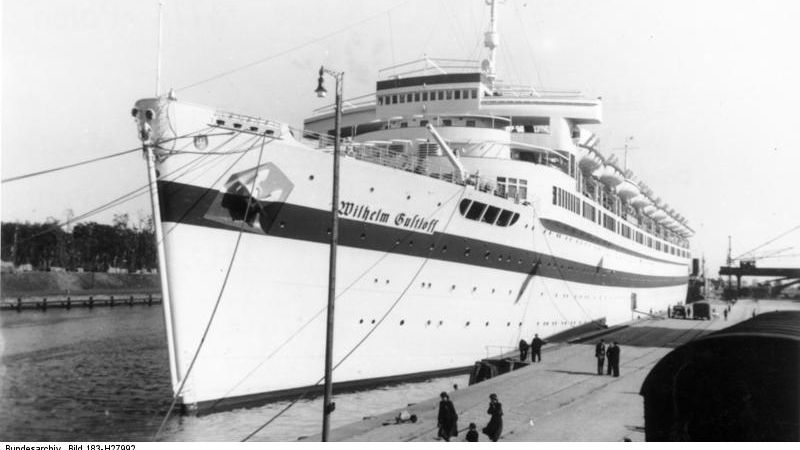Anniversary: The Largest Single Loss of Life at Sea

The loss of the Wilhelm Gustloff, a German military transport ship which was sunk on January 30, 1945, has become infamous as the largest loss of life on a single ship.
The vessel was hit by a Soviet submarine S-13 in the Baltic Sea while evacuating German civilians, Nazi officials and military personnel from Gdynia as the Red Army advanced. By one estimate, 9,400 people, including around 5,000 children, died.
Constructed as a cruise ship for the Nazi Kraft durch Freude (Strength Through Joy) organization in 1937, she had been requisitioned by the Kriegsmarine (German navy) in 1939. She served as a hospital ship in 1939 and 1940, and was then assigned as a floating barracks for naval personnel in Gdynia before being put into service to transport evacuees in 1945.
The ship left Gotenhafen early on 30 January 1945, accompanied by the passenger liner Hansa, also filled with civilians and military personnel. They were escorted by two torpedo boats, however Wilhelm Gustloff was left with just one escort after two of the vessels developed mechanical problems.
Against the advice of the military commander, Lieutenant Commander Wilhelm Zahn (a submariner who argued for a course in shallow waters close to shore and without lights), the Gustloff's captain, Friedrich Petersen, decided to head for deep water which was known to have been cleared of mines. When he was informed by a mysterious radio message of an oncoming German minesweeper convoy, he decided to activate his ship's red and green navigation lights to avoid a collision in the dark, making the vessel easy to spot in the night.
As Wilhelm Gustloff had been fitted with anti-aircraft guns, and the Germans, in obedience to the rules of war, did not mark her as a hospital ship, no notification of her operating in a hospital capacity had been given.

The ship and her escorting torpedo boat were sighted by the Soviet submarine S-13, under the command of Captain Alexander Marinesko. The submarine sensor on board the escorting torpedo boat had frozen, rendering it inoperable as had Wilhelm Gustloff's anti-aircraft guns, leaving the vessels defenceless.
Marinesko followed the ships for two hours before launching three torpedoes at Wilhelm Gustloff's port side about 30 kilometers (19 miles) offshore, hitting it with all three.
The first torpedo (with text written on it: "For the Motherland") struck near the port bow. The second torpedo ("For the Soviet people") hit just ahead of midships. The third torpedo ("For Leningrad") struck the engine room in the area below the ship's funnel, cutting off electrical power to the ship.
Reportedly, only one lifeboat was able to be lowered, the rest had frozen in their davits and had to be broken free with some lost when they fell or capsized as a result of the panic.
The water temperature in the Baltic Sea at that time of year is usually around 4 °C (39 °F); however, this was a particularly cold night, with an air temperature of −18 to −10 °C (0 to 14 °F) and ice floes covering the surface.
Many deaths were caused either directly by the torpedoes or by drowning in the onrushing water. Others were crushed in the initial panic on the stairs and decks, and many jumped into the icy sea.
Less than 40 minutes after being struck, Wilhelm Gustloff was lying on her side and sank bow-first, in 44m (144 feet) of water. German forces were able to rescue 1,252 survivors.
On February 10, just 11 days after the sinking, S-13 sank another German ship, General von Steuben, killing about 3,000 people.
The opinions expressed herein are the author's and not necessarily those of The Maritime Executive.
